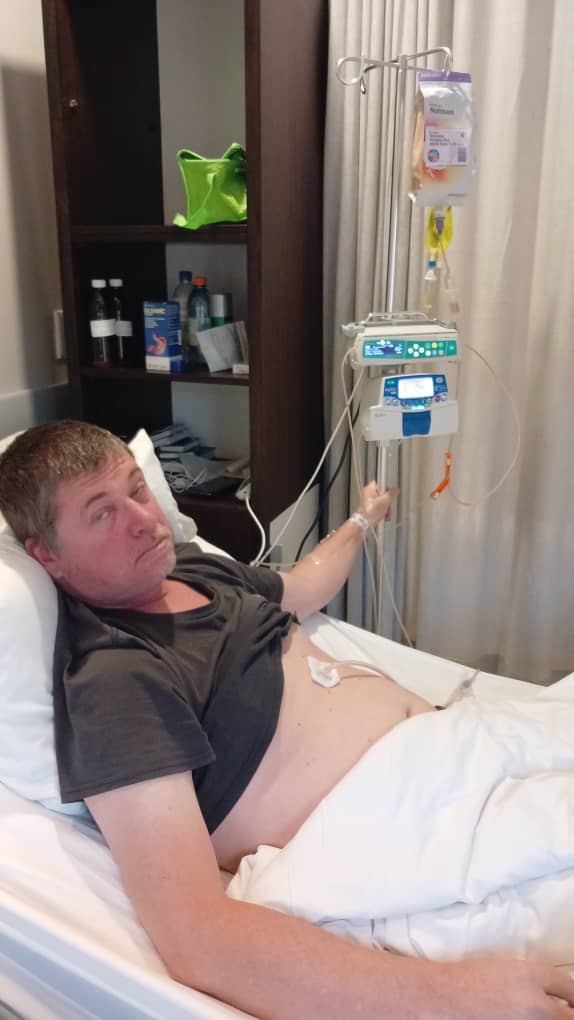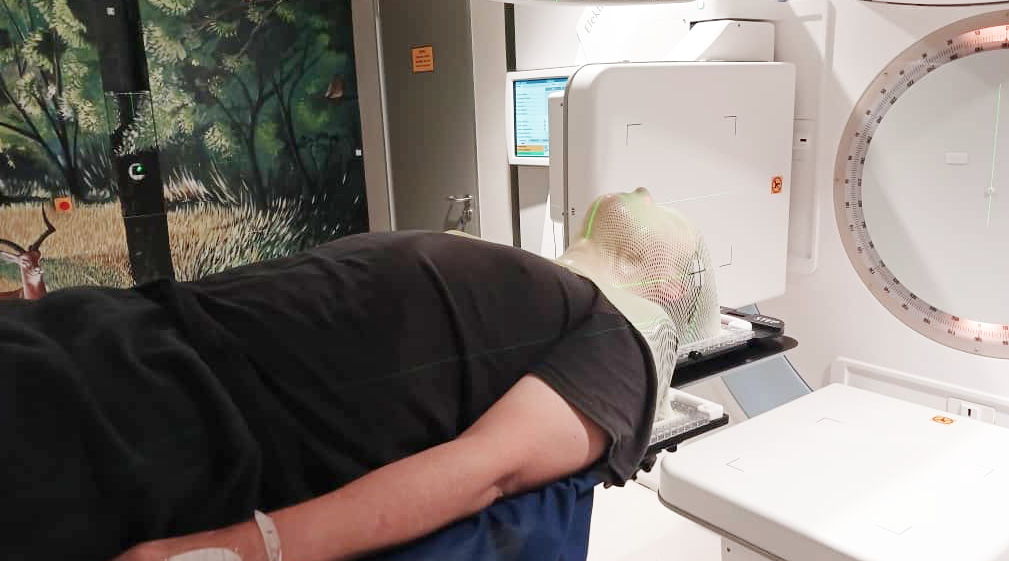It’s ironic, actually.
I discovered a small, painless bump on my neck when I was feeling healthier than I had in years.
Life seemed to be falling into place, and the future looked bright. I wasn’t sick – not even a hint of weakness.
Fast forward eight months.
Radical neck surgery, chemotherapy, radiation and a feeding tube had stripped me of 30kg, my energy and my sense of self.
I was left physically weaker, mentally drained and sicker than ever.
The brutal paradox of my experience is not how sick cancer made me – it is how sick the ‘cure’ made me.
While I wait for follow-up check-ups to confirm if the cancer is gone, the reality is clear: Fighting cancer is a battle of survival, not just because of the disease but the treatment itself.
Of course, the diagnosis shocked my family, while friends, colleagues and strangers poured out sympathy.
I had to make a difficult decision: Endure the cancer and its inevitable, agonising end, or endure radical treatment and a difficult recovery.
I chose the latter.
“You’re still young and strong,” they said. “You’ll be okay.”
Yet there were voices advising against traditional treatments, suggesting alternative therapies – anything but what the doctors prescribed.
Trusting in God, I decided to go under the scalpel, endure the chemicals and let the radiation burn.

SUPPORT … A surprise visit by Erongo governor Neville Andre, Erongo police commander commissioner Nikolaus Kupembona and members of the media fra- ternity in the Erongo region showed me people do care.
SURGERY
The first big step was surgery – seven hours of removing infected tonsils, 43 lymph nodes, part of my jugular and an entire neck muscle.
The pain afterwards was excruciating, but with strong pain medication and physiotherapy, I began to recover – just in time for the next round of treatment: six weeks of chemotherapy and radiation.
I couldn’t eat. Food, once a joy, became inedible. My body weakened.
Eventually, I was hospitalised, fed through a tube and plagued by nausea and mucositis, which made me feel like I was suffocating.
I felt like I was dying. My family thought I was dying. I remembered a song called ‘Killing Yourself to Live’.
I was dying to live.
After six weeks, I rang the bell at the oncology centre.

SLOW RECOVERY
“My treatment is done,” it tolled, “and now I am on my way”, read the label above it.
But the truth was, I felt far from on my way. I felt depressed and recovery at home was very slow.
For weeks, I did nothing.
Only recently have I begun to feel like myself again, yet the trauma of the treatment lingers.
I would not go through it again, but that is me.
I would still encourage others to find the strength if they can.
For me, the miracle wasn’t healing, but rather the love and support I received from family, friends, colleagues and strangers alike.
It turns out people do care, and that is also a kind of cure.
RISING TIDE
Namibia is facing a rising tide of cancer cases threatening to overwhelm its health system.
According to the Cancer Association of Namibia, breast, cervical and prostate cancers remain the most prevalent, and the trend of late-stage diagnosis significantly reduces survival rates.
This underlines the urgent need for early detection and education.
Data from Globocan 2022 and Namibia’s National Cancer Registry show that in 2022 and 2023, Namibia recorded 3 453 new cancer cases and 1 940 cancer-related deaths.
Over the past five years 8 603 cases were registered.
The figures further show that cancer is affecting men and women almost equally, though the incidence rate is slightly higher among men.
Among men, prostate cancer remains the most common, accounting for 22,5% of all male cancer cases, with 347 new diagnoses in 2022.
Kaposi sarcoma and non-Hodgkin’s lymphoma follow as the second- and third-most frequent cancers among men.
In contrast, breast cancer dominates the cancer landscape for women, representing 28,9% of all female cancer cases, with 553 new cases recorded.
Cervical cancer also looms large, contributing 18,3% to the overall cancer burden among women.
“The earlier cancer is detected and treated, the better a person’s chances of survival are,” says Anthea van Wyk, the managing director of the Namibian Oncology Centre.

Van Wyk’s emphasis on awareness and education is echoed by Rolf Hansen, the chief executive of the Cancer Association of Namibia.
“We’re now heading to 4 000 new cases of cancer every year,” he says.
Hansen attributes the rise in cancer cases to the lack of a comprehensive national cancer control plan and a legal framework for data access, noting that “just getting the data together is horrible already”.
He calls for a concerted effort to improve screening programmes, particularly for breast, cervical and prostate cancers.
Ministry of Health and Social Services executive director Ben Nangombe says the government is committed to improving cancer care services in Namibia, despite the overwhelming challenges. “The biggest challenge is the increase in the cases of cancer. The waiting period for radiation therapy is two to three months,” Nangombe says.
Currently, Namibia has three oncology centres, two in Windhoek and one at Swakopmund, with radiotherapy services limited to the capital.
This puts an enormous burden on patients living outside Windhoek.
Nangombe also highlights the government’s efforts to upgrade radiotherapy services at Windhoek Central Hospital and expand these services to other regions.
Health and social services minister Kalumbi Shangula, speaking at a technical meeting on the development of a national cancer control plan recently, acknowledged that cancer rates in Namibia have risen by 12% in recent years, with breast and cervical cancers being the most common.
He said the plan must serve as a roadmap for action aimed at reducing the incidence and mortality rate of cancer, while improving the quality of life of those affected by the disease.

Despite the daunting challenges, Namibia is making strides in its battle against cancer.
The opening of a new community care centre in Windhoek marks a giant step forward in providing psychosocial support and raising awareness of cancer prevention and treatment options.
This centre is designed to address the critical issue of late-stage cancer diagnosis by offering resources and support to those in need.
Furthermore, Namibia is working to improve access to treatment by investing in modern diagnostic and therapeutic technologies.
“Namibia has world-class diagnostic and treatment facilities and there are very few cases that we are not able to manage with a multidisciplinary approach,” Van Wyk says.
In addition to the structural challenges, misinformation and conspiracy theories surrounding cancer continue to complicate the fight against the disease.
Van Wyk says people should avoid relying on unverified information found online.
As for alternative treatments, Van Wyk acknowledges their potential role in managing side effects, but cautions that they should be used in conjunction with conventional cancer treatments.
“Treatment is effective,” she asserts, “but what type of cancer is diagnosed, at what stage it was detected and the general physical state of the patient all play a role in the success of the treatment.”
Van Wyk offers words of encouragement for those battling cancer.
“No matter the situation, however frightening it may seem, there is always cause for hope. Be strong and courageous,” she says.
The upcoming National Cancer Control Plan, set to be implemented by 2025, holds promise for a future where cancer patients in Namibia have better access to care and a higher chance of survival.
Stay informed with The Namibian – your source for credible journalism. Get in-depth reporting and opinions for
only N$85 a month. Invest in journalism, invest in democracy –
Subscribe Now!






